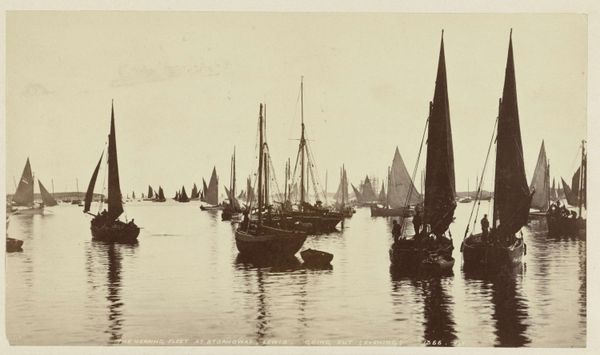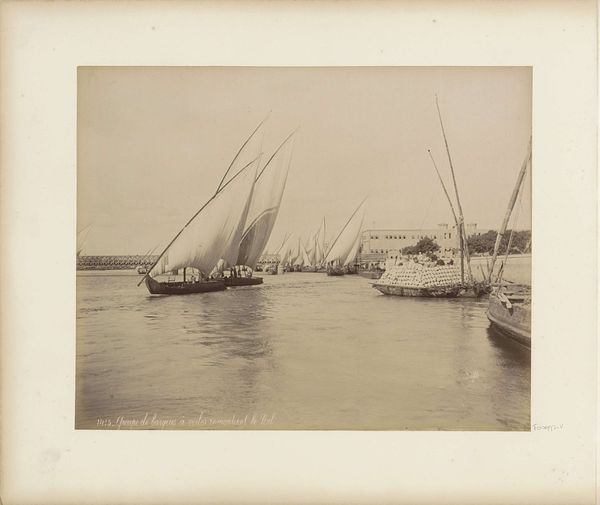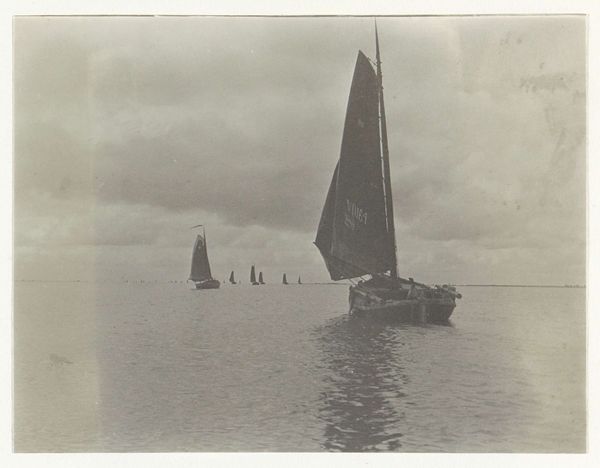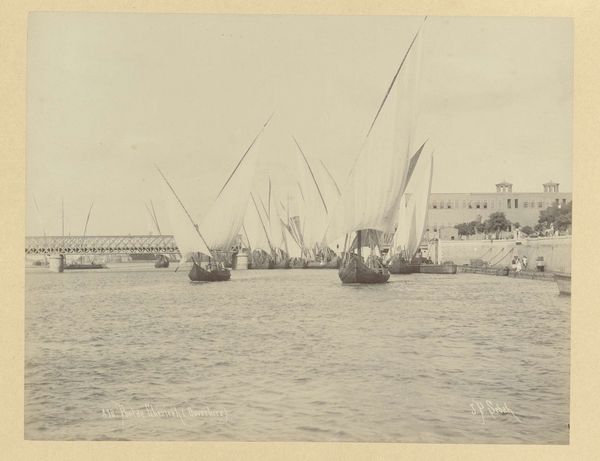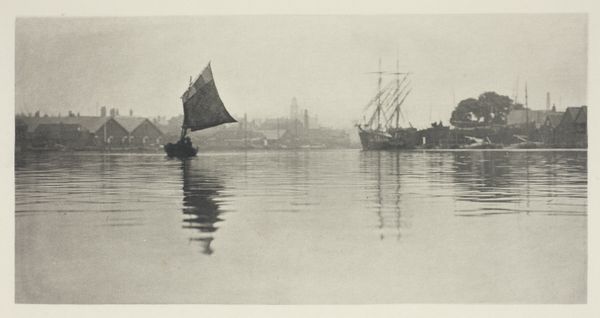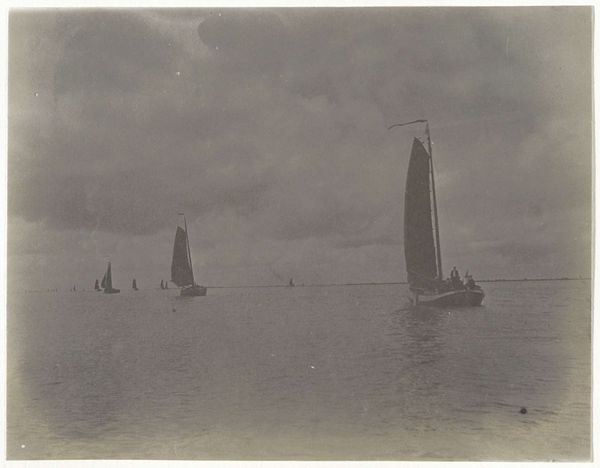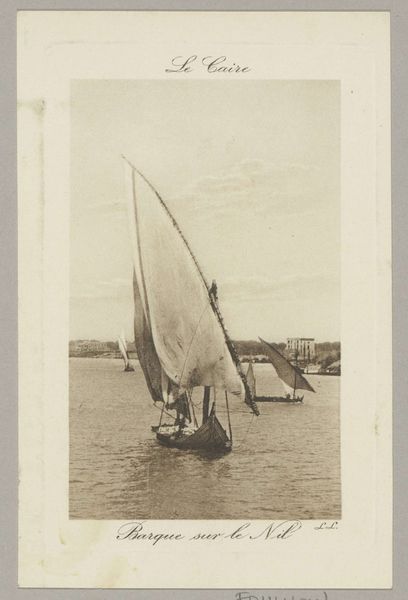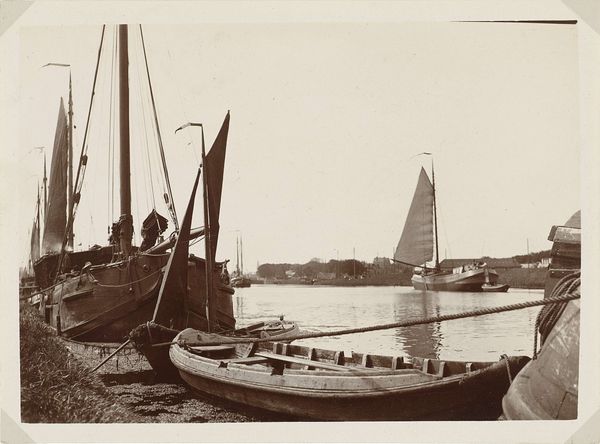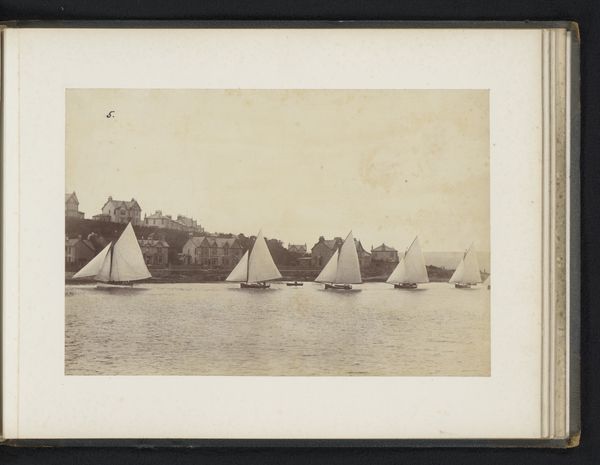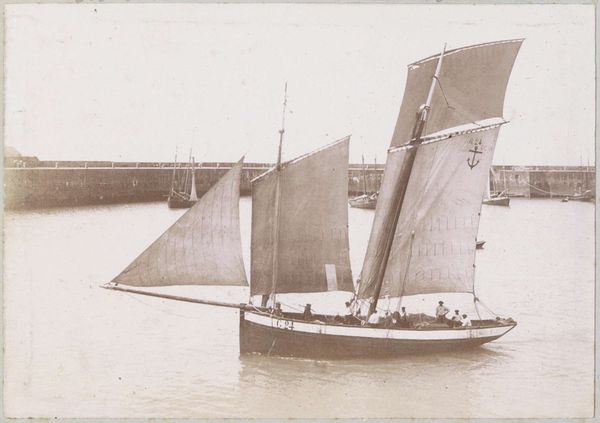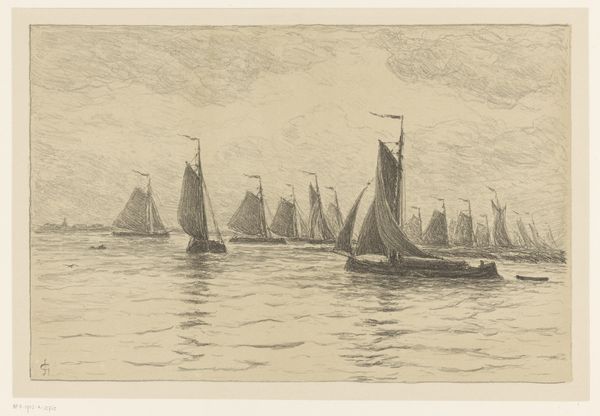
print, photography, gelatin-silver-print
#
pictorialism
# print
#
landscape
#
photography
#
gelatin-silver-print
#
surrealism
Dimensions: 22.5 × 28.8 cm (image/paper); 28.6 × 40.5 cm (album page)
Copyright: Public Domain
Curator: This is Peter Henry Emerson's "A Sailing Match at Horning," a gelatin silver print possibly from 1885 or 1886, now residing here at the Art Institute of Chicago. Editor: It strikes me as almost ghostly, a captured moment where the crispness of the sails contrasts with the diffused, dreamlike quality of the water and sky. Curator: Emerson was a key figure in pictorialism, advocating photography as an art form akin to painting. The softness you observe is central to that aesthetic - the image isn't about precise detail, but rather creating a mood, an emotional response. Editor: And contextually, Horning itself—this was the era of the Industrial Revolution, right? So here, these idyllic scenes were more and more in conflict with urban life, and photography started to preserve fleeting glimpses of a vanishing pastoral life. Curator: Exactly. Emerson argued against the sharp focus that defined scientific photography. He favored a selective focus, mirroring human vision. Look at how your eye is led around the composition by the sharp details of a given vessel. Editor: It is carefully considered. But to me the image is not so sentimental; it's an important representation of leisure culture in Victorian England. Who had access to sailing? Who participated in these regattas, and what values did they project? Curator: It’s about a rising middle class and, I think, also, Emerson presents photography as subjective experience, as crafted illusion, pushing back against those purely documentary or "objective" readings. Editor: I still see the romanticization, but also I see how Emerson made this scene readable for a rising segment of society. "Tradition" in photography itself was just getting formalized, and I see how pictorialism served specific social purposes for him, even as he promoted his own craft. Curator: A productive tension. Seeing through both those lenses reveals such a compelling picture. Editor: I agree. By engaging in its social moment and the artist's structural intentions, we perceive the layers of history that shape photographic representation today.
Comments
No comments
Be the first to comment and join the conversation on the ultimate creative platform.

